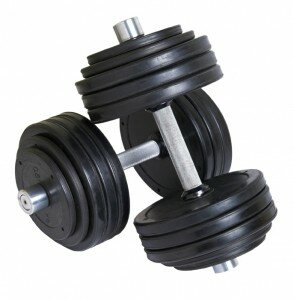 Not every one wants to be a bodybuilder!
Not every one wants to be a bodybuilder!
Something I have noticed many trainers often do, regardless of their clients’ needs, wants or goals, is to prescribe split routines. Split routines are the reserve of the body builder or strength athlete and really have no place in the average gym users’ weekly schedule!
The whole point of a split routine is to permit large amounts of volume to be performed for individualized muscle groups to encourage hypertrophy to occur which is influenced directly by training volume. Very few of our clients are seeking such a specialized response from their exercise routines and therefore are most of them aren’t candidates for this type of training.
The majority of our clients will benefit far more from performing different whole body routines 2-3 times weekly plus an appropriate amount of cardiovascular exercise on the days in between.
Full body training uses large amounts of energy, eliminates the need for lots of isolation exercises, is extremely time efficient, promotes muscular balance and trains the body as a single synergistic unit – which is how it normally functions. All it takes is a single missed workout from a weekly split routine and the whole programme becomes unbalanced whereas missing one day of whole body training will, other than a missed exercise opportunity, will still address all of the clients’ muscular needs. Also, human nature being what it is, it’s quite likely that if a client is going to miss a workout, it’s going to be one they enjoy less or find hardest and chances are, that’s the one they can’t afford to miss because it’s the one that addresses their weaknesses.
Whole body training requires creativity on behalf of the trainer, intelligent planning, correct ordering of exercises and also belief from the trainer that whole body training is a viable and useful method of training and not for “beginners only”. Writing split routines is relatively easy as it allows for a “kitchen sink” approach to exercise selection – no need to select quality exercises based on merit or functionality when you can do them all in a single session!
When teaching programme design I use the following template to help my students learn how to correctly order their exercises. This template does the hard work for you by balancing movement patterns and avoiding overlapping muscle groups.
| 1 | Compound leg exercise e.g. squats |
| 2 | Horizontal pushing exercise e.g. bench press |
| 3 | Horizontal pulling exercise e.g. bent over rows |
| 4 | 2nd leg exercise (preferably also compound) e.g. lunges |
| 5 | Vertical pushing exercise e.g. shoulder press |
| 6 | Vertical pulling exercise e.g. lat pull downs |
| 7 | Triceps exercise e.g. tricep push down |
| 8 | Biceps exercise e.g. bicep curls |
| 9 | 1st core exercise e.g. stability ball crunches |
| 10 | 2nd core exercise e.g. 45 degree back extensions |
By slotting exercises into the above template, the trainer can easily produce an effective and well balanced whole body routine. With regard to repetitions and sets, these values are goal and fitness level dependent but somewhere between 8-20 reps for 1-4 sets should meet the majority of exercisers needs. Begin with a conservative approach to intensity and volume with the view of making the workout more intense over time as the client becomes fitter and more able to perform the workout. Remember that you don’t have to use the same rep and set scheme for all the exercises. Distribute the volume of the workout as necessary. For example you may have the client perform 3 sets of the leg exercises but only 2 sets for the rest of the body and only 1 set for the arms at the end.
Making progress
Once the basic programme has been designed and has been followed for a period of time, it will become necessary to manipulate the training variables to promote further improvements in fitness…
The training variables include the following:
- Altering the rep range
- Decreasing the rest periods
- Increasing the number of sets being performed
- Changing the exercises e.g. from machine to free weight
- Increasing number of exercises per muscle group
- Increasing the load being used
- Altering the order of the exercises
- Progressing exercise complexity/skill requirement
- Increasing the balance or stability demand of the exercise e.g. progressing to stability ball exercises
- Using unilateral (single limbed) movements
- Combining exercises into complexes, supersets or adopting other training systems e.g. drop sets, super slow, pre exhaust or post exhaust training to name a few.
Periodic manipulation of the training variables and rotation of exercises should result in an almost endless variety of workouts without having to resort to split routines which are best left to bodybuilder wannabes and aren’t really suited for the majority of our typical clientele. There is nothing wrong with split routines per se, just the fact that they are often prescribed to clients’ whose requirements would be better met by whole body programmes.
So go and write a new workout for your self? Use the template provided in this article and you are certain to design a well balanced and effective exercise programme.





